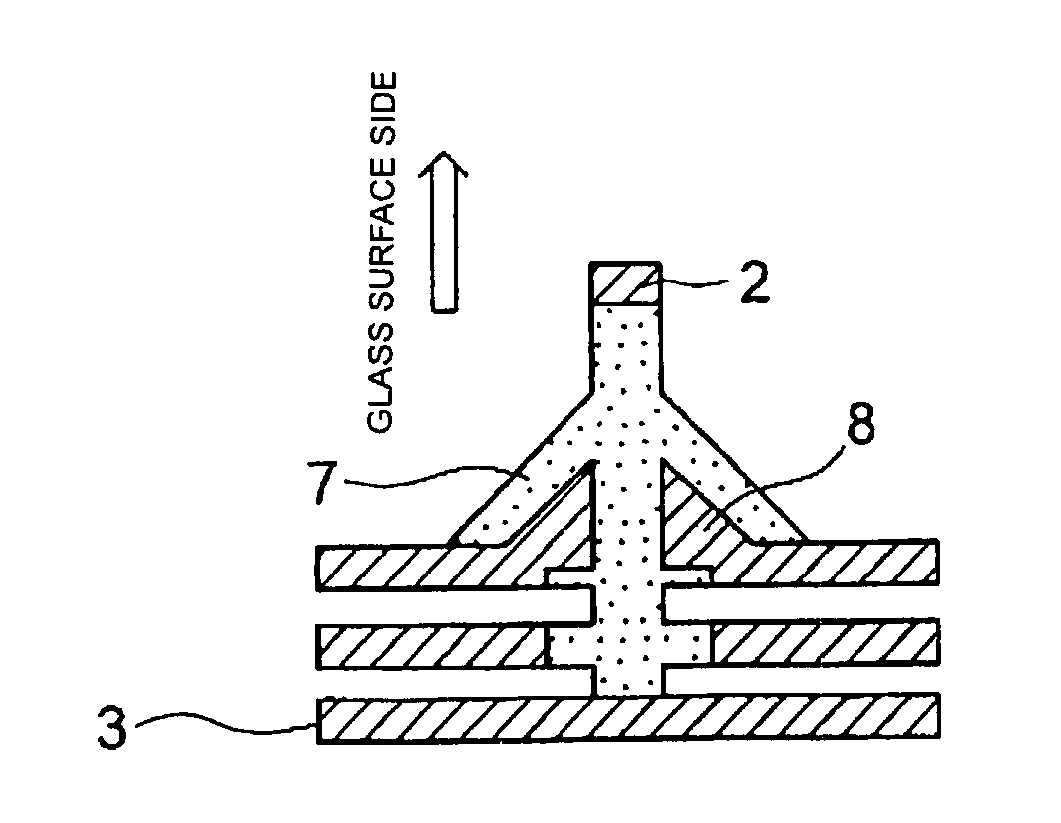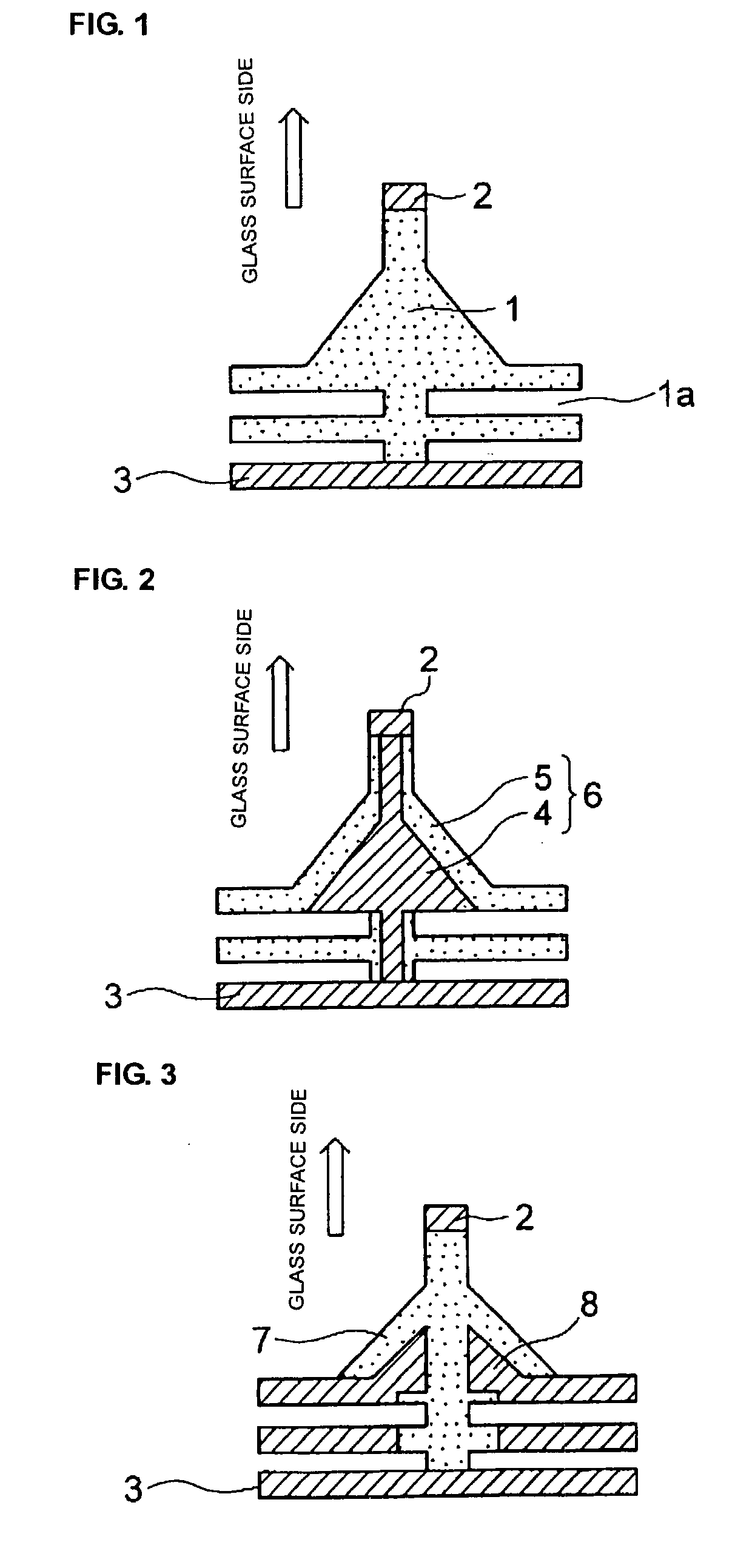Wiper blade rubber and process of producing the same
a technology of rubber and blades, applied in the field of rubber blades, can solve the problems of poor rubber elasticity, increased sliding resistance, abnormal sound generation, creaking or chattering,
- Summary
- Abstract
- Description
- Claims
- Application Information
AI Technical Summary
Benefits of technology
Problems solved by technology
Method used
Image
Examples
Embodiment Construction
[0055] 3 parts of dicumyl peroxide as an organic peroxide crosslinking agent was added to and mixed with 100 parts of EP75F (a trade name of JSR Corporation) as EPDM comprising dicyclopentadiene as a third component to prepare an uncrosslinked EPDM composition for molding of a tip wiping portion.
[0056] 1.5 parts of TC-12 (a trade name of GE Toshiba Silicone Co., Ltd.) as an organic peroxide crosslinking agent was added to and mixed with 100 parts of TSE260-5U (a trade name of GE Toshiba Silicones Co., Ltd.) as a silicone rubber to prepare an uncrosslinked silicone rubber composition for molding a main body.
[0057] Those uncrosslinked compositions were extrusion molded using the crosshead type extruder as explained hereinbefore. Thus, there was obtained a wiper blade rubber having a structure in which a wiping layer 2 comprising EPDM was provided by adhesion on a tip portion of a wiper blade main body 1 comprising a silicone rubber, and a fitment-fixing portion 3 comprising EPDM was i...
PUM
| Property | Measurement | Unit |
|---|---|---|
| thickness | aaaaa | aaaaa |
| thickness | aaaaa | aaaaa |
| particle size | aaaaa | aaaaa |
Abstract
Description
Claims
Application Information
 Login to View More
Login to View More - R&D
- Intellectual Property
- Life Sciences
- Materials
- Tech Scout
- Unparalleled Data Quality
- Higher Quality Content
- 60% Fewer Hallucinations
Browse by: Latest US Patents, China's latest patents, Technical Efficacy Thesaurus, Application Domain, Technology Topic, Popular Technical Reports.
© 2025 PatSnap. All rights reserved.Legal|Privacy policy|Modern Slavery Act Transparency Statement|Sitemap|About US| Contact US: help@patsnap.com


